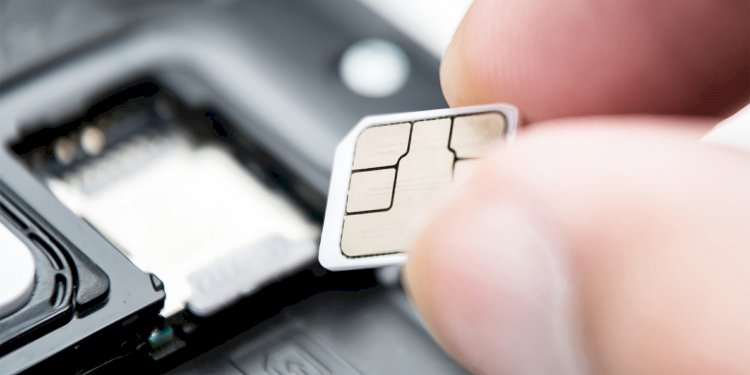How Is The Blockchain Replacing The SIM Card?
The tech giants are witnessing blockchain being replaced by the SIM card. Read along the reasons behind it.

The Current Scenario In Telecommunications Industry
It is observed that along with blockchain, the telecommunications industry has experienced more than its fair share of change and thereby necessity has evolved extremely quickly where the computing and communications have merged as the industry has had to deal with debates about privacy and data ownership and major companies have quickly morphed into the giants of today
Thereafter this constant change is highlighted by the impending merger of AT&T and Time Warner has approved by a US district court judge where the shakeup will change the game for telecommunications in the US with competitors scrambling to make similar deals to keep up. Therefore AT&T merger will let it tap the same market as Netflix and Amazon as others will use the threat to justify their mergers no matter how they turn out as the turmoil in the industry is not nearly over.
It is therefore at the same time that the technology that powers telecommunications is rapidly changing and old standards are being challenged. Here the SIM card which is one of the staples of mobile phones is facing obsolescence as the digital solution offers significant improvements. Thereafter with the help of new concepts like blockchain, the smartphones of tomorrow are sure to look familiar whereas their technology will be a massive leap forward that’s been a long time coming.
Thereby Combining Communications Tech With Blockchain
Thereby the blockchain revolution continues to gather steam as for good reason where the blockchain’s distributed ledger is a powerful system for democratically organizing the nodes or users on its network while it is also rewarding them for the lending processing power and the other resources. Thereafter Blockchain’s decentralized ledger has laid the foundation for ideas including a decentralized cloud storage network, self-sovereign banks, and transparent voting systems. It is more important however that it could also radically change the way the smartphones operate.
To sum up, despite the bells and whistles smartphones offer today, the technology that drives them is surprisingly outdated as most smartphones still use the SIM which is a physical memory card that was first developed backin1991 holding the identity and cellular network details of each user including their phone number, name service provider and other information. Thereafter SIM s are the relatively basic way to upgrade a phone as one simply removes the card and plugs it into a new device. Hereby switching providers isn’t as easy and still require customers to drive a brick and mortar store for a new SIM.
A Look Into eSIM Technology and Blockchain Creating New Markets
Here the eSIM is essentially the software holding the same information as a regular SIM but on a digital module instead of a physical chip. Thereafter Apple already deploys it in its Apple Watch and iPad products as the tout slimness above all and couldn’t afford to incorporate the tiniest of memory cards. It is though the move was mostly intended to cut out cell service providers, where Apple and Google first showed the efficacy of the eSIM model by selling their devices without a pre-loaded service provider. Therefore the customers can simply choose from any number of providers and data packages once connected to WiFi saving them precious time and effort.
The fact is that thereby the consumers also save money with eSIMs as it is a threat to service providers who charge installation fees and upsell relevant products in their branches as if centralized companies like Apple, and by now Google can use these eSIMs to disrupt this lucrative cash flow and simultaneously offer more flexibility for consumers as it’s easy to imagine that what the technology can accomplish when it is combined with blockchain. Therefore KeepGo recognized the opportunity early and is putting the plan into motion.
Therefore, soon devices with eSIMs can connect to KeepGo’s distributed marketplace where the users can enjoy a bigger selection of data plans with greater transparency. Therefore instead of purchasing the right to surf from a third party users will be able to choose their provider in a decentralized network where the twist is that other users are the providers and share their data with others via KeepGo’s Decentralized Megabyte Exchange.
Hence the blockchain-based services have started popping up looking to be first to corner the emerging market, as Dent Wireless offers a service letting users purchase mobile data directly on their mobile phones, as well as sending data. Here comes the QLink which is yet another blockchain telecommunications pioneer, that is now building out its infrastructure to provide tools like wi-fi sharing, mobile data and even enterprise to peer services.
Finally Fighting for the Future
As it comes to be a disruptive technology, eSIM and blockchain face significant resistance from entrenched industry players, and even so they’re finding their way into the world thanks to consumer-minded innovators and companies that see the value of changing with the times. Thereafter despite the sometimes slow progress, both technologies have long since secured their continued existence. Here the clock is ticking until eSIMs are the new status quo and blockchain itself pushing through various industry obstacles helping them arrive precisely on time.
What's Your Reaction?




















